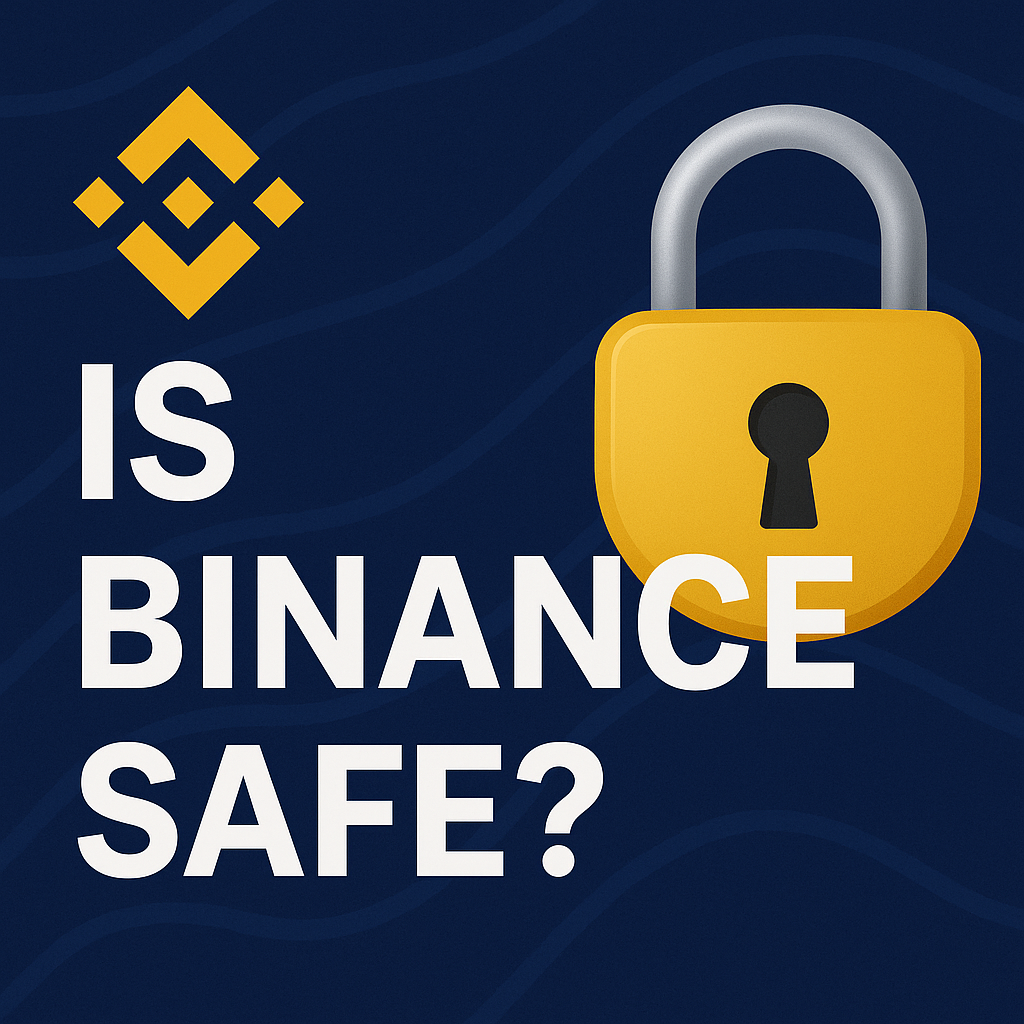When it comes to cryptocurrency trading, few names command the same recognition as Binance. With over 150 million users worldwide and billions in daily trading volume, Binance is undeniably the largest crypto exchange on Earth.
But with great size comes great scrutiny—and questions. Is Binance safe? Has it been hacked? What’s the company doing to protect user assets? And should you trust it with your money in 2025?
Let’s dive into the facts and unravel Binance’s security track record.
The 2019 Hack – A Wake-Up Call
In May 2019, Binance suffered its most infamous security breach.
What Happened?
Hackers exploited vulnerabilities in the platform’s security architecture, stealing:
- 7,000 BTC (~$40 million at the time)
- API keys, 2FA codes, and possibly other user data
The attackers used a combination of phishing, malware, and API exploits. It was sophisticated and coordinated.
Binance’s Response
Binance acted swiftly:
- Paused all deposits and withdrawals
- Reimbursed all affected users using its SAFU fund (Secure Asset Fund for Users)
- Overhauled its security protocols
The transparency and speed of Binance’s response were praised by the crypto community. However, the hack highlighted just how attractive Binance is to cybercriminals.
What Is the SAFU Fund?
The Secure Asset Fund for Users (SAFU) is a key part of Binance’s security model.
Key Facts:
- Launched in July 2018
- Binance allocates 10% of all trading fees to SAFU
- Stored in a cold wallet (offline storage)
- Used to cover emergency user losses due to breaches
It’s one of the only emergency funds of its kind in the crypto space, acting like a reserve insurance fund.
As of 2025, SAFU is estimated to hold over $1 billion, giving users peace of mind in case of system-wide incidents.
Binance’s Security Infrastructure
Binance has significantly upgraded its infrastructure over the years. Let’s look at the measures in place today:
1. Cold Wallet Storage
The majority of customer assets are held in offline cold wallets, immune to online attacks.
2. 2FA and Device Management
- Mandatory two-factor authentication (2FA) using SMS, Google Authenticator, or biometrics
- Anti-phishing codes for verifying official Binance emails
- Users can view and manage device logins and API permissions
3. AI-Powered Threat Detection
Binance uses AI and machine learning to detect:
- Suspicious withdrawals
- Abnormal login patterns
- Front-running and manipulation attempts
4. Regular Penetration Testing
The company invites white-hat hackers and firms to test vulnerabilities and reward them via a bug bounty program.
5. Withdrawal Whitelisting
Users can enable withdrawal address whitelists to ensure funds only go to pre-approved addresses.
Regulatory Pressure: A New Kind of Risk
While Binance is technologically secure, regulatory issues have become a major concern.
U.S. Crackdown (2021–2023)
The SEC and CFTC launched multiple investigations into Binance and its CEO Changpeng Zhao (CZ) for:
- Operating without licenses
- Allegedly offering unregistered securities
- AML and KYC violations
In late 2023, Binance paid a record $4.3 billion settlement and CZ resigned as part of the agreement.
Global Adjustments
Post-2023, Binance:
- Launched localized entities like Binance.US, Binance Japan, Binance France
- Enhanced KYC/AML processes across all platforms
- Introduced proof-of-reserves to restore trust
While regulatory compliance is still a work in progress, Binance appears more transparent and cooperative than ever before.
User Experience: Is Binance Safe for You Personally?
Security isn’t just what Binance does—it’s also what you do. Here are some tips to stay safe as a user:
✅ Enable All Security Features
Turn on 2FA, withdrawal whitelisting, device management, and email confirmations.
✅ Beware of Phishing Sites
Always double-check URLs. Bookmark the official site: https://www.binance.com
✅ Don’t Reuse Passwords
Use a strong, unique password with a password manager like Bitwarden or LastPass.
✅ Avoid Public Wi-Fi for Trading
Public networks are vulnerable to man-in-the-middle attacks. Use a VPN if needed.
✅ Cold Wallets for Large Holdings
If you’re holding large sums of crypto, transfer it to a hardware wallet like Ledger or Trezor. Use Binance for trading, not long-term storage.
Binance vs. Other Exchanges (Security Comparison)
| Exchange | Hack History | Emergency Fund | Proof of Reserves | Regulated Regions |
|---|---|---|---|---|
| Binance | Yes (2019) | Yes (SAFU) | Yes (Post-2023) | 100+ countries |
| Coinbase | No major hacks | No | Yes | U.S., EU, more |
| Kraken | No | No | Yes | Highly compliant |
| KuCoin | Yes (2020) | Partial | Yes | Fewer jurisdictions |
Binance has the most comprehensive safety measures among major global exchanges—but its centralization and regulatory baggage raise questions for cautious users.
Centralized vs Decentralized: Trust and Control
Let’s face it—Binance is centralized. While it champions decentralization in its DeFi products (e.g., BNB Chain), the core exchange is a custodial, controlled platform.
If you value:
- Ease of use
- Fast trades
- Multi-chain support
Binance is excellent.
If you prioritize:
- Full control of your private keys
- Self-sovereign assets
Then decentralized exchanges (DEXs) or cold wallets are safer options.
The Verdict: Is Binance Safe in 2025?
✅ Yes—if you use it wisely.
Binance in 2025 is a technologically secure, battle-tested platform that has learned from its past mistakes. With tools like SAFU, advanced user controls, and increasing regulatory compliance, it’s one of the safest major crypto platforms available.
But like all centralized exchanges, it comes with inherent custodial risk. Hacks, freezes, or legal orders could theoretically affect your funds—however unlikely.
Final Thoughts: Your Security is a Partnership
Binance has done its part—investing hundreds of millions into security, compliance, and infrastructure.
But your safety also depends on you. Use every tool available, be alert for scams, and avoid complacency. And always remember the golden crypto rule:
“Not your keys, not your coins.”
Binance is a powerful tool for traders and investors—but the ultimate responsibility for your assets lies with you.
